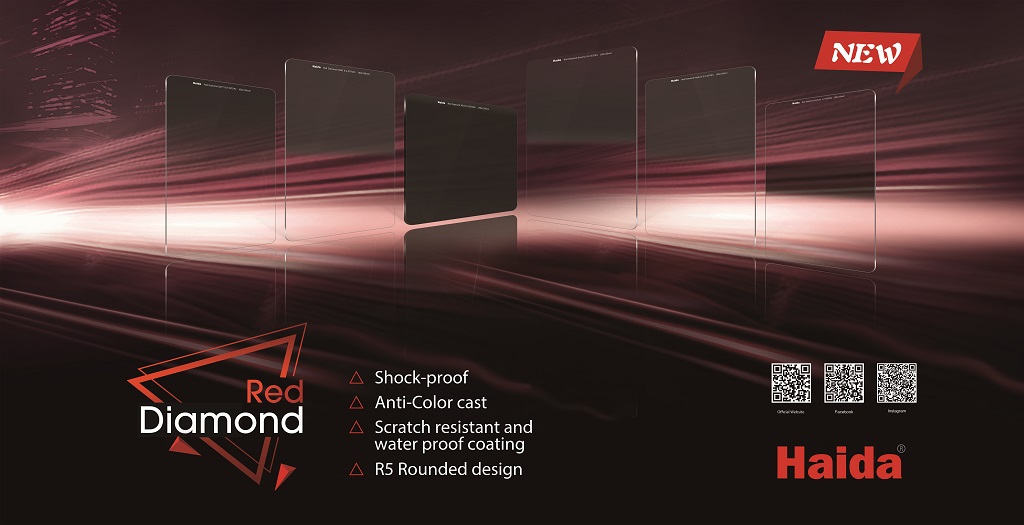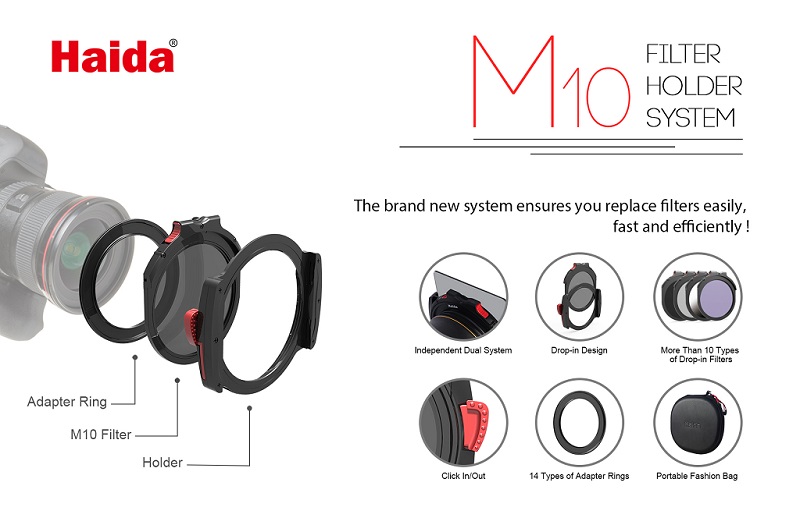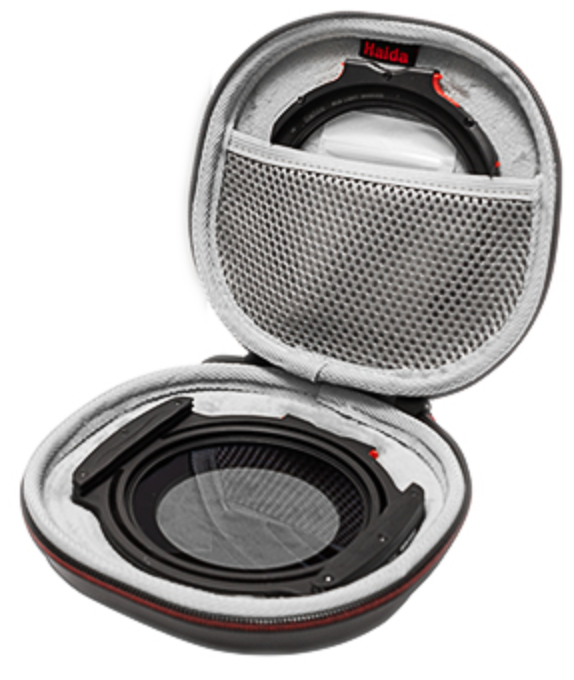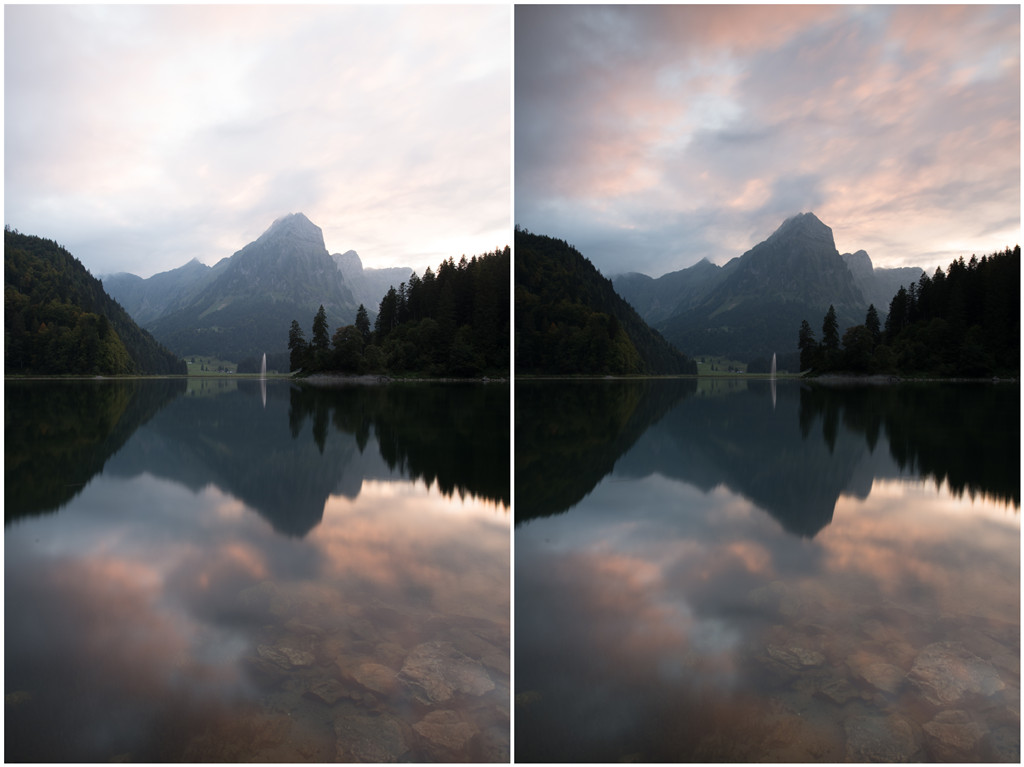Haida Red-Diamod Filter & M10 Filter Holder System
Filters, further information about filters and an exposure time table can be found here.
Author: Simone Cmoon

The latest Haida series "Red Diamond" is launched in 2018.
I have already tested the filters and am completely overwhelmed !! So far, I have worked with the penultimate series and the last one, the NanoPro series and thought that there is hardly any room for improvement at the moment, these high-end products are already delivering great results. But now Haida sets the bar again a whole way further up:
Sharpness
as always top!
Color neutrality
no color cast
Coating
Even easier to clean; if you have clean fingers you will not leave fingerprints.
Splashes of water on the filters can be stripped without pressure with a handkerchief, since the filter surface is waterproof.
The coating has been optimized against scratches.
Material: K9 Glass
The Red Diamond series is made of very hard material. Red diamonds are among the hardest diamonds, so this name is emblematic of the Red Diamond glass filters.
We dropped the filters during the Photokina 2018 for days and only after a few days broke the first filter. The filters were dropped on the flat surface, on the edges and on the corners, approximately from the chest to the exhibition floor. I do not know yet if the filters are so stable in nature, if they fall on a rock or from a further height. However, I can say for sure that the material is much more robust than anything I have heard of filters so far. Thus, I recommend to anyone who quickly and / or often breaks filters to invest a little more to buy a more robust product.
Shape
R5 Design = rounded corners, which on the one hand makes the insertion into the holder easier, on the other hand the filter are better protected corners in case of breakage and splintering.

I also tested the new holders M15 (150mm system) and M10 (100mm system)
The M15 is designed to be attached directly to the front of the lens. The previous holder was slipped from behind and from the front over the lens and screwed together. So with the new holder M15 the lens on the camera can stay tuned, if the holder should be removed or mounted.
The M15 offers space for a round filter (ND, Pol, Nightfilter), which is rotatable directly in the holder and can be quickly clicked on or off with magnets.
The holder has also 2 filter filter slots for 150mm square filters.
Overall, the M15 is slightly bigger and heavier, made of aluminum.
The M10 is designed to quickly attach or remove the holder from the lens. This holder also has 2 square filter slots (ND, GND) and the option of integrating and rotating round ND-, pole- or night-filters in an additional compartment, without first having to remove the square filters.
The M10 is made of aluminum and plastic (to reduce the weight).
The M10 is delivered in a noble and padded bag with double zipper and space for an integratable additional filter. Thus, everything is well protected for transport:

Both holders are supplied with an optional additional square filter compartment.
Take a look at the new products in the following video
Image comparison:
I took both images with the Red Diamond ND 3.0, the left image without Red Diamond GND medium, the right image with Red Diamond GND medium.


The left image without GND has overexposed spots. These too bright areas have no information, even if the bright spots in the post-processing would be darkened. The histogram shows these "dead" spots because the lights touch the right side of the histogram.
The right image with medium GND 0.9 was created exactly with identical settings. The histogram shows that it has no overexposed spots.
Thus, the image without GND would have to be shorter exposured, to create it without overexposation. Unfortunately, this would also mean that the entire picture would be darker and thus the dark areas would be even darker.
Subsequent lightening of the depths always results in a loss of quality, because the dark areas have less tonal values and information and consequently noise is generated when brightening in the post-processing.
GND soft filters are my favorite filters because they harmonize brightness differences.
I was a bit skeptical about using a GND medium filter because I am well-served with the soft (smooth gradients) GND's. I thought that the medium GND filter, which is a mix of hard and soft gradients, might make the dark areas too dark and possibly make a dark edge appear in the image. But the test showed that the trees in the upper center of the image were only slightly darker and nowhere exists a disturbing border between light and dark filter areas.
Thus, the medium GND 0.9 got a fixed place in my filter bag and will be used, if I want to dramatize the sky heavier and if want to increase the contrast or if the sun is directly close to the horizon.


The RAWs: left without filter, right with the integrated pole and the RedDiamond medium GND filter.
The link for the original review:
Related News
